It seems Ramona Cox was born for adventure. She won’t share the locations of her favorite fishing holes, but she’s quick to share her survival stories with other adventurers, whether they travel by land, air, or sea. The Hollywood, California, native has adventured through 50 countries, pushing the limits of her comfort zones and navigating through one danger after another. From seemingly impossible remote landing strips requiring difficult technical maneuvers to swimming with sharks and living among bears, this pint-sized woman lives to roam our wild planet. She shares her Skychick Adventures at skychick.com.
Tell me about your drive for challenge and excitement.
The majority of my life has revolved around exploration, and my goal has been to explore every plain this planet has to offer, including land, sea, and air. I became a pilot for both land and seaplanes and have seen most of the US from the bird’s-eye view of my airplane, from coast to coast and into Canada and Alaska. Then, being a backpacker in my youth, I realized that I could get deeper into the woods a lot faster with an airplane, so I took up the little-known sport of air-camping, also called backcountry flying. So, instead of driving to a campsite, I spend entire summers (3-4 consecutive months) landing at wilderness airstrips and living solo among moose, mountain lions, and grizzlies. My plane is packed with gear, including a boat, and I fish daily for dinner and hunt foul with a traditional recurve bow.
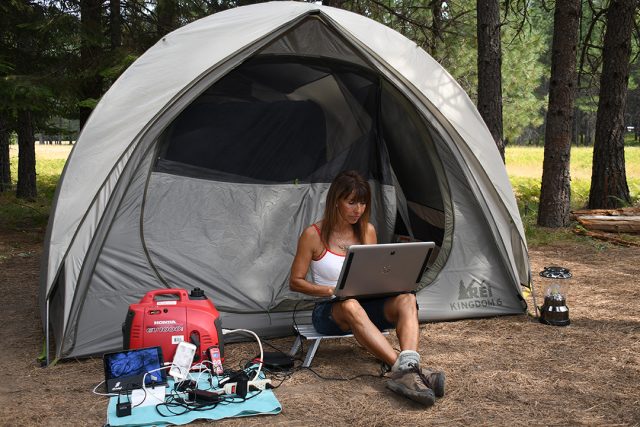
Because I was drawn to the sea, I became an advanced nitrox diver and filmed underwater life all over the world, from schooling hammerheads in Costa Rica to mating mantas in Palau and whale sharks in the Galapagos. Then came land exploration. On a whim, I decided to take up RVing and created the Skyway to Highway Adventure sponsored by Honda. Four years, 30 states, and 30,000 miles later, I am still exploring the land and loving it.
What prompted you to be such a daredevil, especially in such male-dominated sports?
My father was an athlete and hardcore adventurer. He was my primary role model since my mother passed from cancer when I was 10 years old, and he encouraged me to try any sport I was drawn to; the predominant gender participating in that sport was irrelevant and not even a consideration. He said, ‘You can do anything you want. You just need to decide what it is and go for it.’
Where is your home base?
The United States. I’ve traveled to 50 countries because I have a passion for learning about different cultures. The more primitive, the better. I’ve finally gotten around to exploring the USA, and am endlessly amazed at the epic beauty and diversity of terrain that this country has to offer.
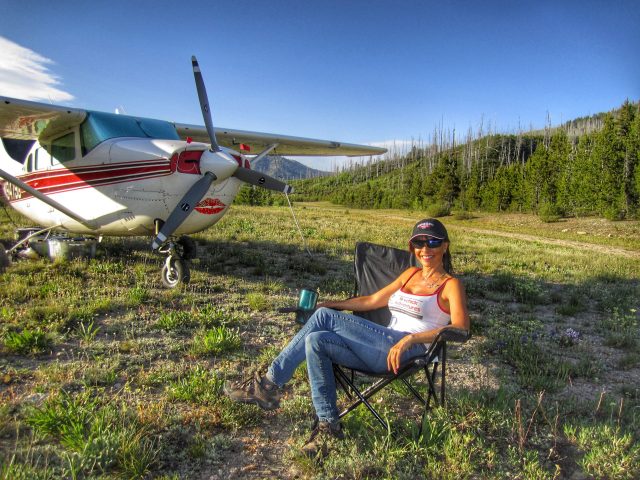
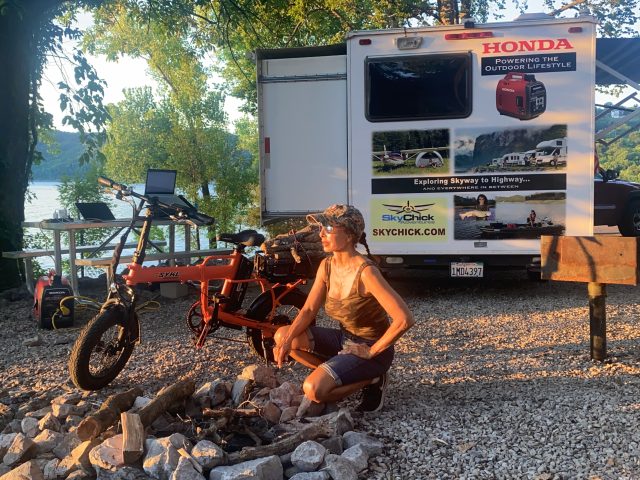

So, you live in your plane and on the road?
“I guess you could say that. I am changing out my airplane engine right now, so in the meantime, my land-based transportation is a 2016 GMC Yukon, which pulls a Lance 1575 travel trailer. My friend introduced me to overlanding, and I immediately enjoyed the challenge and saw similarities to backcountry flying. I completely relate to overlanders’ passion for being remote. I purchased the trailer and then foolishly changed the axle to lift it 6 inches thinking the extra height would turn into an overland trailer. It didn’t. I am constantly repairing things I break because my appetite for off-road far exceeds my off-road capabilities.”

Your frame is pretty small to be out there by yourself. I bet you get that a lot.
I’m 5 feet and 98 pounds. There is always a look of amazement on the face of the other aviators (99 percent of them are males) when I land at a gnarly airstrip with an epic camping setup. I sit on three pillows to see out the window and require rudder extensions to reach the rudder pedals. But my plane is badass. It’s a Cessna TU 206 Stationair, a six-seat, turbo-charged aircraft with cargo doors and big, red lips on the front. Obviously, I’m not afraid to show my femininity.
My aircraft model is commonly used in Alaska for carting hunters and their elk out of the bush. It can carry 1,000 pounds of gear and 80 gallons of fuel. That’s rare for small aircraft. It has cargo doors, and I often take a boat and Honda outboard motor, plus whatever I need to survive for an entire summer.
But you don’t fly as a living, right? You do it for the adventure?
I chose not to have aviation as a career. I always wanted to keep it as a fun sports hobby. Since I’ve flown for decades; I think from a bird’s-eye view. If you tell me you live in Taos, I see the deserts, mountain ranges, and terrain between where I am and your location. That’s how my brain works. On the ground, I feel like an ant in the grass, and I have a hard time connecting the dots. Flying is part of my DNA, and adventure runs in my veins. My father was a pilot, so my bedtime stories always started with ‘There I was … ’ I was raised to be fearless and have learned that fear does nothing than get in the way of handling a situation. I’ve sat in my tent and listened to the crack of branches breaking from bears going after my hanging food, then listened to them ripping up my pack and voraciously gobbling and slobbering all over my foodstuff. There is nothing that stinks worse than bear slobber.
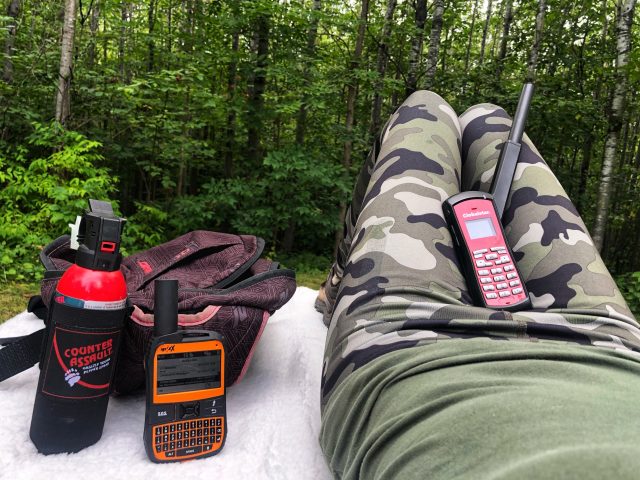

How long have you been flying?
I learned decades ago at Van Nuys Airport in Southern California. I was ski-racing against a fellow on a dual slalom course at Mammoth Mountain, and he said that he built experimental airplanes, and it only took two hours for him to fly there instead of driving six. My first thought was, ‘What’s an experimental airplane?’ My second thought was, ‘How do I get a ride?’ I met him at the airport and saw a very odd little plane called a VariEze. It’s a small tandem-seat aircraft that looks like a tiny Jedi fighter plane. I hopped in, and we did loops and rolls, and I was hooked. The next day I signed up at UCLA for flight lessons and have been flying since.
How are you received by your male counterparts in the industry?
To say the least, it raises eyebrows. When I started 20 years ago, not once did I see another solo female pilot land and camp. Now there are few, but with only 6 percent of the total pilot population being female and a mere handful of us being backcountry pilots, we’re a rare breed. One big barrier is that you generally can’t rent an airplane and land off-airport (dirt or grass) because it voids the insurance, and very few women own an aircraft. Skychick Adventures became an icon in the backcountry flying realm because I was seen all over the Western states flying solo for months as opposed to doing a weekend jaunt, which is the norm. I was simply doing what I loved, and that was obvious. Pilots asked me to share my experiences, so I’ve lectured at airshows and aviation associations for 16 years.

What do you do for a living now?
I have worked remotely as a sales rep for MotoArt for 16 years handling most of the US and other countries. We make functional furniture out of real airplanes, both military and commercial. I have also been a sponsored blogger for Honda Corporation for the past five years as their voice for the general aviation and the RV communities. Having blogged about my adventures for 20 years, Honda saw me on stage at an airshow raving about using my Honda generator and outboard motor on my flying trips. No one had ever talked about that, and [not many] pilots had even considered it. They saw my honest passion for their products, and I’ve been a sponsored ambassador for them ever since. I also have my book and DVD series Flying Off the Grid.
What has been your closest call?
I’ve had a few. Some in the air, some on the ground, and some underwater. I’ve been stalked by a mountain lion and came very close to being stomped by a moose. I’ve had a tire and rim fly off of my camper when traveling 60 mph on a country road, was lost underwater in a cave in the Galapagos, barely escaping before nightfall, and have had a couple of weather situations flying that taught me lessons I’ll never forget.
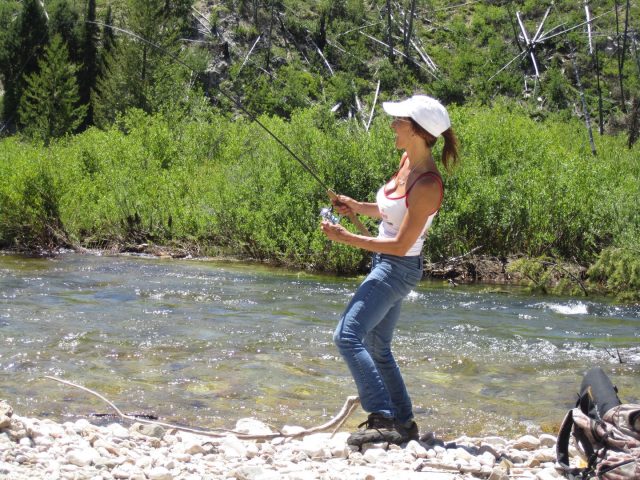
How do you handle it when things go wrong?
Well, diving and flying are very similar. You have at best two to three minutes to fix a situation. If you run out of air diving or lose an engine flying, you need to make decisions quickly. And it is important not to panic. Panic releases adrenaline and freezes your ability to make decisions that are critical in the now. The worse it hits the fan, the more I go into a calm, super clear state of decision-making and identify exactly what needs to happen to stay alive and focus like a laser beam on that objective. I also try to assume that if things aren’t going as planned, it’s usually happening for the greater good, and I am being directed to a better path. Does that make sense?
It does. And you lecture to pilots about camping products?
I do three kinds of lectures. One is exclusively about gear. Overlanding and backcountry flying can be very unforgiving, and gear can make the difference in a life or death situation. Pilots trust me because I test gear to the extreme, and I share the good and bad. If it doesn’t do what it says it does, I say it. Another talk focuses on off-grid flying locations and the level of difficulty for each. Lastly are FAA-designated and approved technical talks that cover the nitty-gritty, show accidents, and give tips on how to avoid getting into a pickle and get home safely.
What can overlanders borrow from these lessons?
Hard-core overlanders are very camping savvy and have some of the best setups I’ve seen. I learn a lot from them. Similar to backcountry flying, they get extremely remote with no services or cellular coverage. The biggest difference is a rescue. If one vehicle can get there, others can too. Where I go, serious recovery is only by air because there are no roads to access the airstrips. Because of that, I always have a satellite phone and some form of a location device like a SpotX, which can text to a friend or hit the SOS button if it really hits the fan.
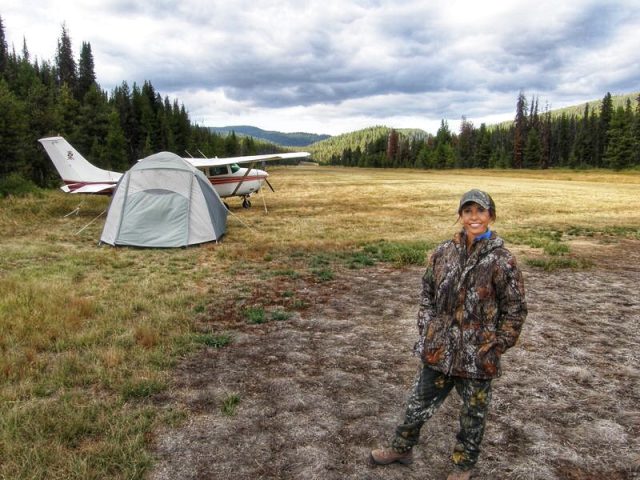
What does the future hold for you?
The sky’s the limit. I’m single, my remote work is flexible, and my life is flexible. I am open to whatever is brought into my path. So far, I have been blessed, and life has treated me well. I enjoy giving motivational talks, so I will be focusing more on that and continuing my travels until there is a reason to stop. Africa and the Maldives are on my bucket list, and I love water, so exploring some cool parts of the world by boat might be fun. Leaving the door open to possibilities has never failed me, so I am excited about the unknown and what my future holds.
To find out more about Ramona, visit Skychick.com.
Our No Compromise Clause: We carefully screen all contributors to ensure they are independent and impartial. We never have and never will accept advertorial, and we do not allow advertising to influence our product or destination reviews.


